You can also use one of the overloaded methods of [System.Windows.Forms.MessageBox]::Show() which allows you to add the owner window in order to have the messagebox be topmost to that.
By using $null there, your messagebox will be topmost to all opened windows:
function Show-MessageBox {
[CmdletBinding()]
Param (
[Parameter(Mandatory = $false)]
[string]$Title = 'MessageBox in PowerShell',
[Parameter(Mandatory = $true)]
[string]$Message,
[Parameter(Mandatory = $false)]
[ValidateSet('OK', 'OKCancel', 'AbortRetryIgnore', 'YesNoCancel', 'YesNo', 'RetryCancel')]
[string]$Buttons = 'OKCancel',
[Parameter(Mandatory = $false)]
[ValidateSet('Error', 'Warning', 'Information', 'None', 'Question')]
[string]$Icon = 'Information',
[Parameter(Mandatory = $false)]
[ValidateRange(1,3)]
[int]$DefaultButton = 1
)
# determine the possible default button
if ($Buttons -eq 'OK') {
$Default = 'Button1'
}
elseif (@('AbortRetryIgnore', 'YesNoCancel') -contains $Buttons) {
$Default = 'Button{0}' -f [math]::Max([math]::Min($DefaultButton, 3), 1)
}
else {
$Default = 'Button{0}' -f [math]::Max([math]::Min($DefaultButton, 2), 1)
}
Add-Type -AssemblyName System.Windows.Forms
# added from tip by [Ste](https://stackoverflow.com/users/8262102/ste) so the
# button gets highlighted when the mouse hovers over it.
[void][System.Windows.Forms.Application]::EnableVisualStyles()
# Setting the first parameter 'owner' to $null lets he messagebox become topmost
[System.Windows.Forms.MessageBox]::Show($null, $Message, $Title,
[Windows.Forms.MessageBoxButtons]::$Buttons,
[Windows.Forms.MessageBoxIcon]::$Icon,
[Windows.Forms.MessageBoxDefaultButton]::$Default)
}
With this function in place, you call it like:
Show-MessageBox -Title 'Important message' -Message 'Hi there!' -Icon Information -Buttons OK

Edit
As asked by Ste, the above function shows the messagebox TopMost. That however does not mean it is Modal. It only means the box is shown on top when first displayed, but can be pushed to the background by activating other windows.
For a real Modal messagebox that cannot be pushed to the background, I use this:
function Show-MessageBox {
[CmdletBinding()]
param(
[parameter(Mandatory = $true, Position = 0)]
[string]$Message,
[parameter(Mandatory = $false)]
[string]$Title = 'MessageBox in PowerShell',
[ValidateSet("OKOnly", "OKCancel", "AbortRetryIgnore", "YesNoCancel", "YesNo", "RetryCancel")]
[string]$Buttons = "OKCancel",
[ValidateSet("Critical", "Question", "Exclamation", "Information")]
[string]$Icon = "Information"
)
Add-Type -AssemblyName Microsoft.VisualBasic
[Microsoft.VisualBasic.Interaction]::MsgBox($Message, "$Buttons,SystemModal,$Icon", $Title)
}
Show-MessageBox -Title 'Important message' -Message 'Hi there!' -Icon Information -Buttons OKOnly


